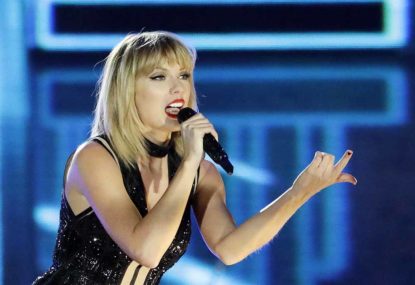Chinese Grand Prix talking points: Stroll has become the most hated F1 driver in a long time - but that's simply an unfair call!
The absolute vitriol against the Canadian that has come from the incident is beyond reprehensible.

It’s hard to believe that it was a little less than a year ago that the future of Formula One in the United States looked terminal.
After the Governor of Texas cut USD 5.5 million – or approximately 20 per cent – from the race’s state subsidy in the well-known context of ruthlessly milking race promoters for all of, if not more than, they’re worth, the Austin circuit’s chairman, Bobby Epstein, summed his situation succinctly.
“To use a technical term, we’re screwed,” he told Austin’s American-Statesman last November.
Jump forward 11 months and prospects for the four-year-old Circuit of the Americas (COTA) are looking as bright as they did at its 2012 opening.
And it was a good thing the race made it at very least to 2016, because despite another season of silver-coloured on-track hegemony, the biggest crowd in the history of the grand prix at Austin turned out to watch Lewis Hamilton dominate the weekend.
An impressive 269,889 people made the trek to the circuit 30 kilometres outside the city centre, almost 5000 more than made it to the inaugural race.
There is a secret – an open secret, but one nonetheless apparently unknown to the Formula One hierarchy – as to how the United States Grand Prix managed to recover its flagging fortunes, and after many minutes sourcing the exact quote, this column can (un-)exclusively reveal the formula.
“We’re investing in our future to bring new fans out,” Epstein explosively confided to Associated Press.
That bombshell of a quote, nonchalantly uttered in March this year to little fanfare, could yet save the sport from its own declining popularity.
The ideas of *investing* and *the future* are both strange and frightening to Formula One, but this year’s United States Grand Prix was a successful illustration of how to decode both concepts and put them to use.
Chief among COTA’s strategies to embrace a future beyond Formula One’s stated target audience of 70-year-old Rolex wearers was to entice Taylor Swift, at the pointy end of any list of today’s biggest music acts, to perform at the circuit post-qualifying in her only live show of 2016.
The announcement earlier in the year triggered a broad gamut of questioning reactions from the sport’s many facets. This demonstrated how dangerously close Formula One might already be to locking down that septuagenarian audience to the exclusion of all others – but by the time the concert came around few doubters could credibly hold tack. Swift was a hit – and a boon for the race.
Rolling Stone estimated an 80,000-strong crowd embraced what had previously been considered an unholy alliance of pop music and motor racing. This is impressive not only because it soaks up around one-third of the race’s cumulative attendance but also because it ranks among Swift’s largest ever concert audiences.
Any general admission ticket to Saturday bought a spectator access to the show, and reports from the track – admittedly anecdotal, but no less informative – suggest many racegoers on the day were discovering the sport for the first time precisely because they’d travelled to the circuit for Taylor Swift rather than Formula One.
It might be tempting for a critic to suggest the ploy was little more than a bus-in, bus-out tactic to boost the numbers, but when masses of a new and unfamiliar demographic are being exposed to Formula One, the outcome can only be good. If even a small percentage of Swift’s fans – vastly young and female, the general slice of society the sport is acutely failing engage – it is a step in the right direction.
That is of course before the run-on benefits of having one of the world’s best-known entertainers associated with the Formula One brand. Even the single teaser photo Swift tweeted two weeks before the concert to her 81 million followers garnered 18,000 retweets and 65,000 likes – numbers Formula One’s official account can only dream about.
Taylor Swift’s Saturday evening concert – likewise Sunday’s performances from Usher and The Roots – is exactly the sort of thing Formula One should be doing more of. Formula One needs to open itself up to the world, to relate to what new audiences are engaging with, and to play a part in the broader entertainment fabric rather than pretend it’s above it all.
Formula One Management’s incoming chairman, Chase Carey, was again the paddock on the weekend. As the man tasked with growing the sport for the foreseeable future, one can only hope he recognised COTA’s success and the potential it embodies.
Follow @MichaelLamonato on Twitter